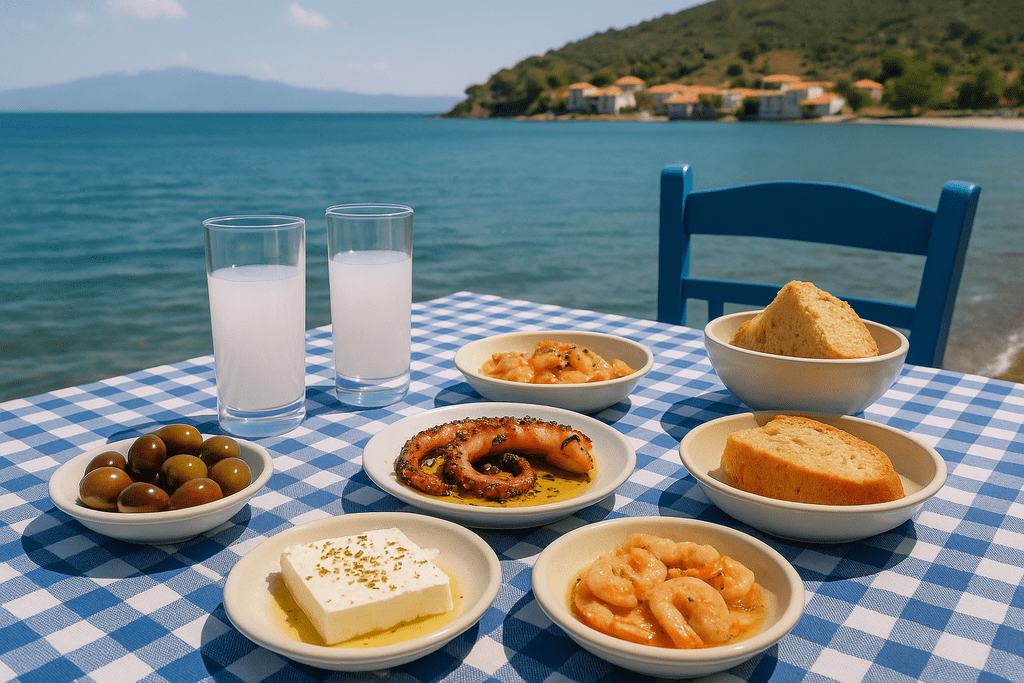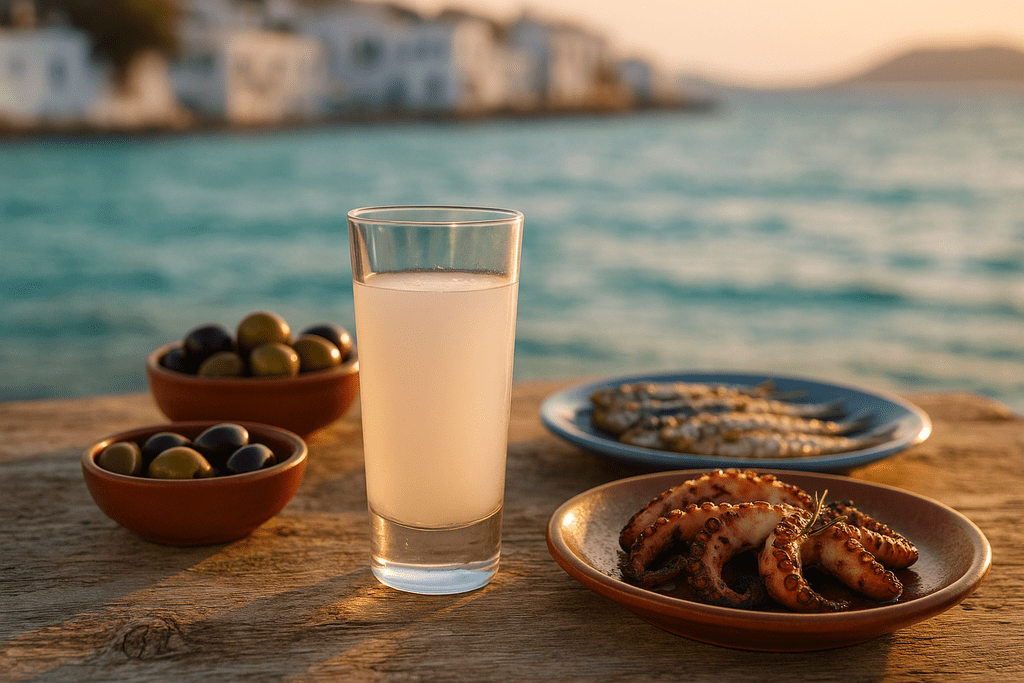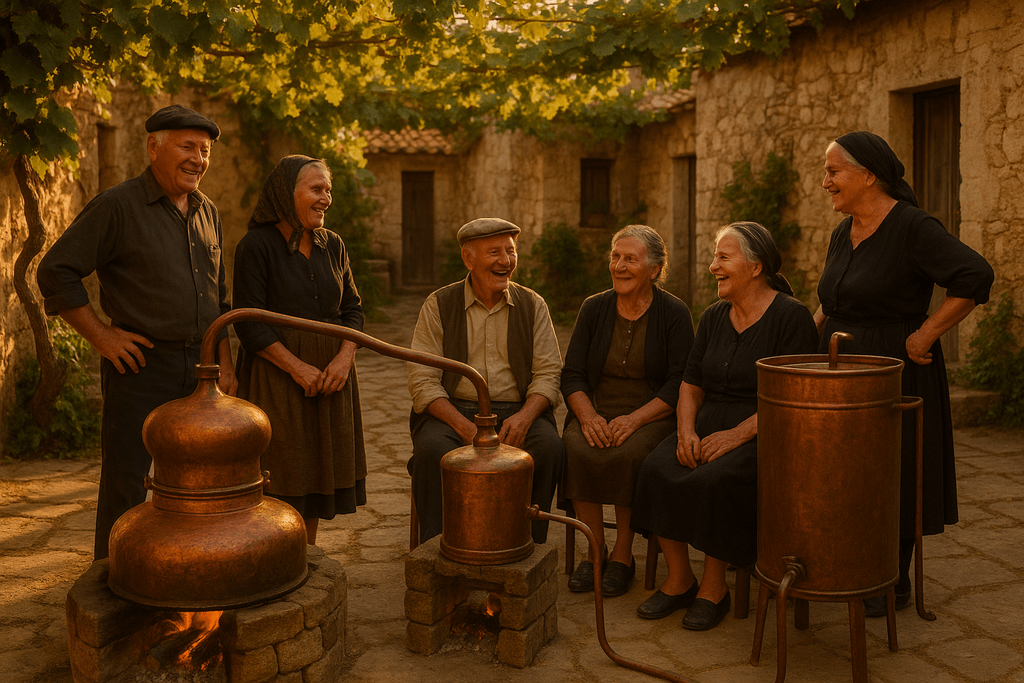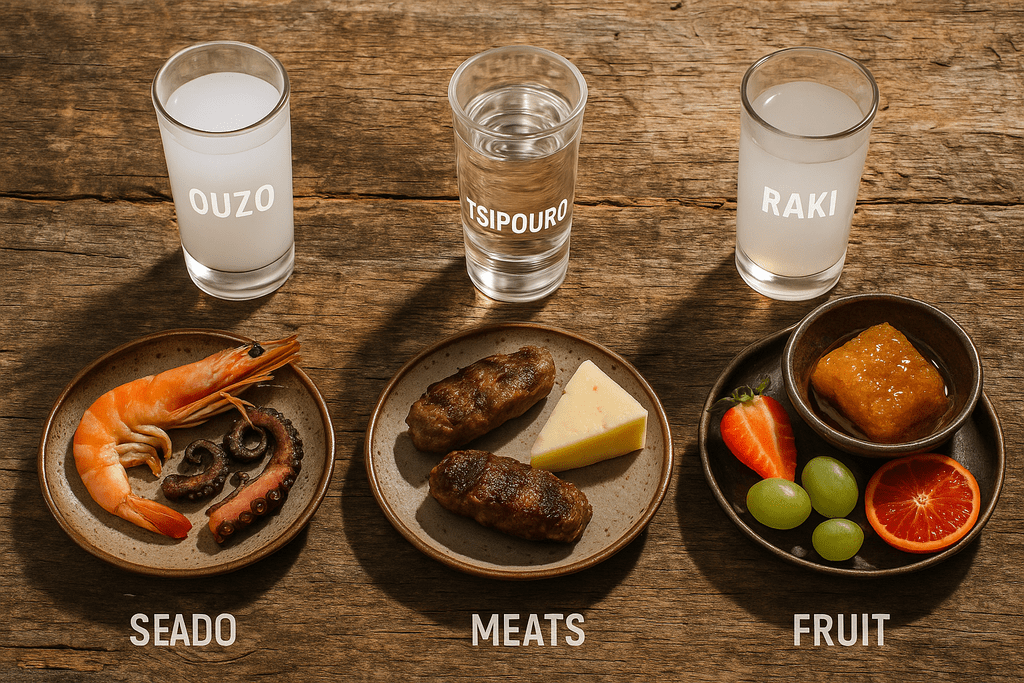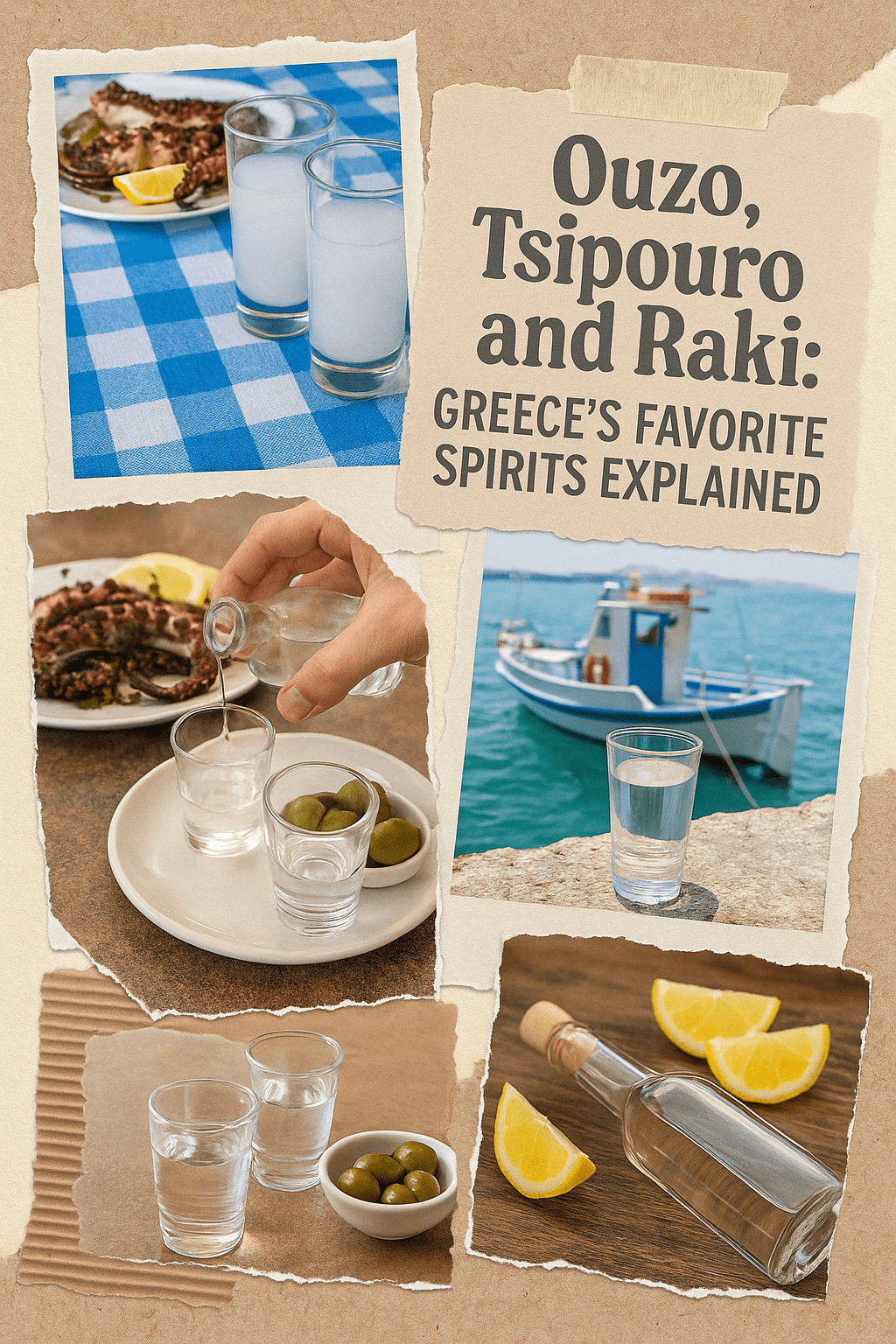Ouzo, Tsipouro & Raki: Greece’s Favorite Spirits Explained
Discover the heart of Greek drinking culture through its most beloved traditional spirits.
Greece isn’t just a land of turquoise coastlines, whitewashed villages, and sun-drenched ruins—it’s also home to a centuries-old tradition of distillation that has produced some of the Mediterranean’s most iconic spirits. Among these, three stand tall and proud: ouzo, tsipouro, and raki. While they may appear similar at first glance—clear, potent, and often infused with anise—they each carry their own stories, traditions, production methods, and cultural significance.
Whether you’ve sipped ouzo by the sea, shared tsipouro with friends in a mountainous village, or taken a fiery shot of raki offered in warm hospitality, understanding these spirits provides a deeper lens into Greek culture and lifestyle. In this article, we’ll explore what makes each of these spirits unique, how they are traditionally made, where to experience them authentically, and how locals enjoy them. This is your comprehensive guide to the heart and soul of Greek drinking culture.
Introduction: More Than Just a Drink
When you think of Greece, images of blue-domed churches, warm beaches, and ancient ruins probably come to mind. But dig a little deeper, and you’ll find another powerful symbol of Greek identity: its traditional spirits.
Meet ouzo, tsipouro, and raki—three iconic drinks that are far more than just beverages. They’re cultural rituals, social glue, and regional pride in a glass. Let’s explore what makes each of them so unique.
Quick Glance
-
-
- Ouzo: Aromatic, anise-flavored, coastal favorite
- Tsipouro: Grape pomace-based, mountain tradition
- Raki: Pure, powerful, and deeply Cretan
-
Ouzo: The Anise-Flavored Icon
What is Ouzo?
Ouzo is Greece’s most famous aperitif, clear until it meets water or ice—then it turns a milky white. Its key flavor is anise, giving it a smooth, licorice-like taste. Often infused with herbs like coriander, cardamom, or cloves, each bottle reflects its region of origin.
A Short History
Ouzo evolved from tsipouro in the 19th century. The island of Lesvos quickly became its stronghold, with distillers in Plomari and Mytilene gaining national fame.
Did You Know? Ouzo has PDO (Protected Designation of Origin) status and can only be made in Greece.
How It’s Made
-
-
- Base spirit (usually grape residue or neutral alcohol)
- Distilled with anise and other botanicals
- Alcohol content: 37.5% or higher
- Often double distilled for smoothness
-
How Greeks Enjoy It
Ouzo is a social drink, never rushed. It’s always served with food—preferably seafood-based meze like grilled octopus, sardines, olives, and taramosalata.
Tip: Dilute with ice or cold water to unlock its full flavor.
Best Places to Try
-
-
- Lesvos Island: Visit ouzo museums and distilleries
- Tyrnavos: Ouzo with strong northern flair
- Kalamata: Lesser-known but high-quality producers
-
Tsipouro: Grit, Grapes & Mountains
What is Tsipouro?
Tsipouro is a distilled spirit made from grape pomace, enjoyed throughout mainland Greece. It can be with or without anise, and its alcohol content can reach 45%. Earthy and bold, it’s the drink of choice for winter nights and lively tavern gatherings.
Monastic Origins
First distilled by monks on Mount Athos in the 14th century, tsipouro was created as a way to use leftover grapes from winemaking. It remained a village staple for centuries before becoming a nationally celebrated spirit.
Making Tsipouro
-
-
- Grape pomace is fermented for 1–2 weeks
- Distilled in copper stills using traditional methods
- Some variants aged in oak barrels
-
How to Drink Like a Local
Served in small shot glasses, often neat. It’s rarely consumed without food—expect it alongside grilled meats, spicy cheeses, or pickled vegetables.
Experience Tip: Try a Tsipouradiko: These tavern-style restaurants serve tsipouro with meze in rounds—no menu, just rhythm.
Where to Experience It
-
-
- Tyrnavos: Birthplace of modern tsipouro
- Volos: Famous for tsipouradika culture
- Ioannina (Epirus): Rustic mountain distilleries
-
Raki (Tsikoudia): The Spirit of Crete
What is Raki?
Known as tsikoudia in Crete but often called raki, this clear, fiery spirit is distilled from grape pomace like tsipouro—but without anise. Its flavor is pure, sharp, and unmistakably Cretan.
A Symbol of Hospitality
Raki is more than a drink—it’s a gesture. Offered after meals, during visits, and at any social occasion, it represents the warmth and generosity of the island.
Home-distilling is common—every village has its own take on raki.
Distillation Rituals
-
-
- Distilled in kazania (copper cauldrons)
- Made during autumn, after the grape harvest
- Shared during “kazanemata”—festive community distillation events
-
How It’s Served
Usually after dinner, with fruit, nuts, or sweets. It’s offered in tiny glasses—meant to be sipped slowly.
Pairing Tip: Raki goes wonderfully with loukoumades (Greek honey donuts).
Raki Trail in Crete
-
-
- Archanes: Boutique distilleries near Heraklion
- Anogeia: High-mountain hospitality
- Rethymno countryside: Home-based kazania visits
- Chania taverns: Best late-night raki with Cretan music
-
Comparing the Three
| Spirit | Main Region | Anise? | Alcohol % | Best Pairings | Vibe |
|---|---|---|---|---|---|
| Ouzo | Lesvos | Yes | ~38% | Seafood, meze | Coastal, leisurely |
| Tsipouro | Thessaly | Optional | 40–45% | Grilled meats, cheeses | Earthy, social, traditional |
| Raki | Crete | No | ~40% | Fruit, desserts | Intimate, raw, hospitable |
How to Explore Them in Greece
-
-
- Try all three on a guided food and drink tour
- Visit a distillery in Lesvos, Tyrnavos, or Crete
- Join a kazanema during autumn in Crete
- Order meze and spirit combos at tsipouradika or ouzeri
-
Final Thoughts: Choose Your Spirit
Every glass of ouzo, tsipouro, or raki tells a story. Whether you’re lounging by the sea, laughing in a mountain tavern, or sharing shots with new friends in a Cretan village, these spirits invite you to slow down and live the moment the Greek way.
So—what will it be?
-
-
- Ouzo for sea breezes and seafood
- Tsipouro for bold flavor and lively talk
- Raki for heartfelt toasts and warm memories
-
Whether you prefer the licorice notes of ouzo, the grape-forward warmth of tsipouro, or the raw authenticity of raki, diving into Greece’s spirits is also diving into its people, places, and stories. These aren’t just drinks—they are companions to life’s moments, big and small. From sun-drenched island shores to mountain villages echoing with laughter and clinking glasses, ouzo, tsipouro, and raki invite you to slow down, taste tradition, and share in the joy of Greek hospitality.
Yamas! (Cheers!)



